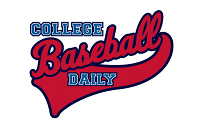 The NCAA Playing Rules Oversight Panel approved a proposal Wednesday that allows conferences and schools to implement the video replay rule in baseball’s regular season starting in the spring of 2017.
The NCAA Playing Rules Oversight Panel approved a proposal Wednesday that allows conferences and schools to implement the video replay rule in baseball’s regular season starting in the spring of 2017.
The video replay rule has been available for use on an experimental basis at the College World Series since 2012. It was also available in the Division I Baseball Championship super regionals for the past two years
The rule was applied for the first time in the College World Series this year in a June 19 game between Coastal Carolina University and the University of Florida. On the play, a ball hit into the right field corner by Coastal Carolina’s Zach Remillard was originally ruled foul. After review, though, it was determined the ball landed in fair territory and he was awarded a double.
The only plays that may be reviewed are:
• Deciding if an apparent home run is fair or foul.
• Deciding whether a batted ball left the playing field for a home run or a ground-rule double.
• Spectator-interference plays.
• Deciding if a batted ball is fair or foul.
• Deciding whether a fielder did or did not make a catch on a fair batted ball hit into the outfield or on any foul ball.
• Deciding scoring plays at the plate.
• Determining if a player should be ejected for a collision (illegal or malicious slides).
• Determining if a run scored on timing plays. (An example would be to determine if a base runner scored before the last out of an inning was recorded at another base.)
Illegal bats
The panel also approved a stronger penalty for players who use illegal bats in a game.
If an umpire can determine by inspection that a bat is illegal after the first pitch is thrown in a count, the batter will be called out and base runners must return to the base they occupied before the ball was put in play. The bat will be taken out of the game.
If the umpire can determine that a bat is illegal before the first pitch of a count, the hitter is called out and the bat is removed from the game.
Windup position
The panel also approved a rule change regarding pitchers’ windup positions. The Baseball Rules Committee was concerned that base runners and umpires were having difficulty differentiating when a pitcher is in a windup or in the stretch position to hold runners closer to the base.
The rule’s language was clarified to say that a pitcher is considered to be in a windup position when the pitcher’s shoulders and chest are generally facing home plate.

